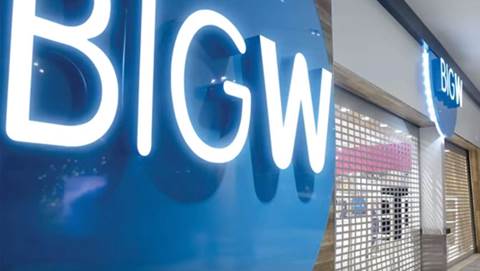The proposed merger between challenger carriers Vodafone Australia and TPG has raised as many questions as answers after the chief executives of both the telcos mounted a spirited push to sell the deal to shareholders ahead of regulatory scrutiny.

Fronting a media call on Thursday morning, TPG chief executive David Teoh and Vodafone Australia chief executive Iñaki Berroeta both skilfully navigated around two sizable elephants in the room: the extent of job losses from the transaction and what role the ban on Huawei had in sealing the marriage.
The head and shoulders of the deal is that it will be largely complementary and based on the obvious synergies of combining fixed and mobile plays to take on dominant players Telstra and Optus.
“The market is massive, massive. The opportunity is massive. There is headroom to move in this market place. We are very excited about the combined group in the long run,” Teoh expounded on the call.
But, in reality, it’s Australia and not that massive, especially if populist policies curbing immigration levels come into play. Wages aren’t exactly rising quickly either.
Notably, both Teoh and Berroeta are heavily spruiking the proposed TPG Limited as a challenger below the size of Telstra and Optus.
That underdog position resulted in Berroeta fending of questions of why he even bothered to remain in Australia, given the Voda mothership usually doesn’t like to come second, let alone third.
“I want to be in Australia because I am going to be part of a business that is going to be a significant change in the market, that has huge opportunity,” Berroeta responded.
Opening the call, Berroeta stressed that “effective competition comes from strong and sustainable challengers, not just lots of small players.”
The scale argument works, the operational synergies are clear and there’s real opportunity to create compelling bundles that can be cross-sold. That said, debt is relatively high.
At the regulatory level, the obvious concern to mitigate will be that more concentration will lead to increased prices. Again, it was a point that both Teoh and Berroeta furiously batted away.
Pressed on prices, Teoh went as far as to say that the infamous $10 mobile plan could go even lower, though as part of a bundle.
“The captive customer base is enormous. So when you [value add] and bundle with the mobile it could be even better. Who knows? We want to create a value proposition for our customer base and for the consumer,” Teoh said.
It’s a shrewd sell, but the reality is that over the medium term some costs may not decline as much as hoped.
The NBN has chipped away at TPG’s plump margins, and now Huawei has been banned from Australia’s core 5G rollout. Neither Voda nor TPG are applauding that national security move, but they say they’ll respect it.
“Effectively reducing the choices that the market has in terms of moving forward with new technologies always has an impact,” Berroeta conceded.
“But at the same time, because we are combining both businesses, we are combining two infrastructures that are very complementary. What we are doing here is enhancing dramatically the number of choices that we have in the way that we design the future architecture.”
Everyone will feel the pain, but the scale of the new venture will give it more price negotiating muscle with suppliers, or so the theory goes.
“Ultimately the decisions around the vendors we could be choosing is actually more a constraint on the market, I do think that this merger gives us a lot of opportunities to be able to choose other vendors if we have to,” Berroeta said.
The question neither chief executive wanted to respond to directly was how many bodies will go over the side of the new venture when it launches. The complementarity of technology and service sets won’t necessitate an immediate mass cull, but there will clearly be duplications to shake off.
Billing systems, back office functions like accounts, HR and payroll, call centres all come into play if TPG’s lean reputation is to be maintained. There will also be one-off merger costs.
Steve Banfield, TPG’s unflappable chief financial officer copped the hospital pass for labour cost questions.
“This is about two complementary businesses coming together. It’s not about redundancies. We do expect to realise substantial synergies from the merger, mainly around a combination of the network, the buying power and the cross-sale opportunity,” Banfield offered.
Pushed if labour costs might go up, Banfield had to draw the line.
“I would not expect labour cost to go up under the deal,” he said.
“Both our companies are very well run companies with very lean cost bases. Both companies have a continued focus on trying to do things more efficiently and in the DNA of the combined group we will always be looking for efficiencies as we do today and that will continue.”
Choices other than to look for efficiencies will also be limited if the new venture intends to aggressively compete on price.
Automation is already rapidly eating away jobs at Telstra and Optus. Both shedding staff at a rate of knots as bots and software defined services entrench themselves. Humans are a cost centre.
TPG may well pull off its ambitious plan to put a sizeable dent in Telstra and Optus’ market share.
But it will not be immune from the same pressures to shed significant amounts of labour to maintain margins as it grows.
On time, on spec and on budget? Pick any two.


_(22).jpg&h=140&w=231&c=1&s=0)

.png&h=140&w=231&c=1&s=0)
_(20).jpg&h=140&w=231&c=1&s=0)



_(26).jpg&w=100&c=1&s=0)

 iTnews Executive Retreat - Security Leaders Edition
iTnews Executive Retreat - Security Leaders Edition












_(1).jpg&h=140&w=231&c=1&s=0)



